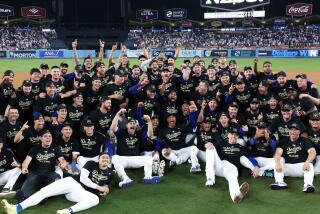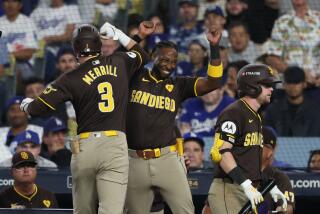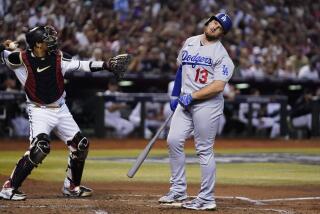Padres look to find success by emulating the Dodgers’ depth
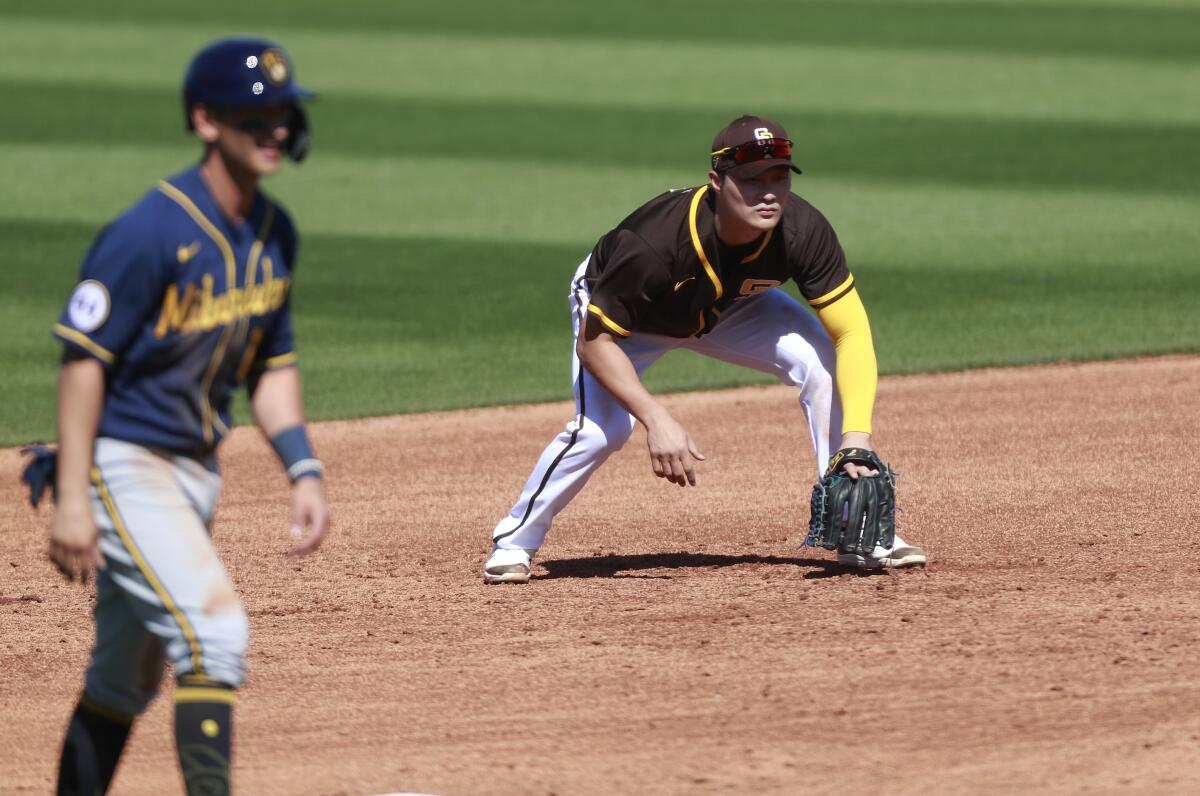
- Share via
PEORIA, Ariz. — Yu Darvish was a Dodger.
The man of many pitches who studies the game with a rare ardor has seen that team play enough to know their real distinction is hidden beneath their Cy Young and MVP award winners.
“The Dodgers aren’t just good at hitting and pitching,” he said. “They are good throughout the whole nine innings of the game.”
That’s the thing. That’s the difference.
Dodgers depth is an ideal to aspire to.
“They’re really well balanced,” Padres manager Jayce Tingler said. “They were the class of baseball throughout the season and then the postseason. Their overall depth was really good. They just don’t have many holes.”
Compare those who played the most at each position for the Dodgers and Padres in 2020, and there wasn’t much difference. The Padres had a higher WAR at six spots (including DH) and a superior OPS-plus at seven spots (including the DH), and the Padres had a higher total WAR (13.6 to 12.4).
Then look at the contributions of each team’s “bench” players.
The Dodgers had four players with a WAR of 0.7 or higher. The Padres had none. (While it is a somewhat skewed comparison given that two of the Padres’ primary “bench” players joined the team with a month to play, the comparison is still informative. Austin Nola and Mitch Moreland had a significant number of plate appearances as Padres.)
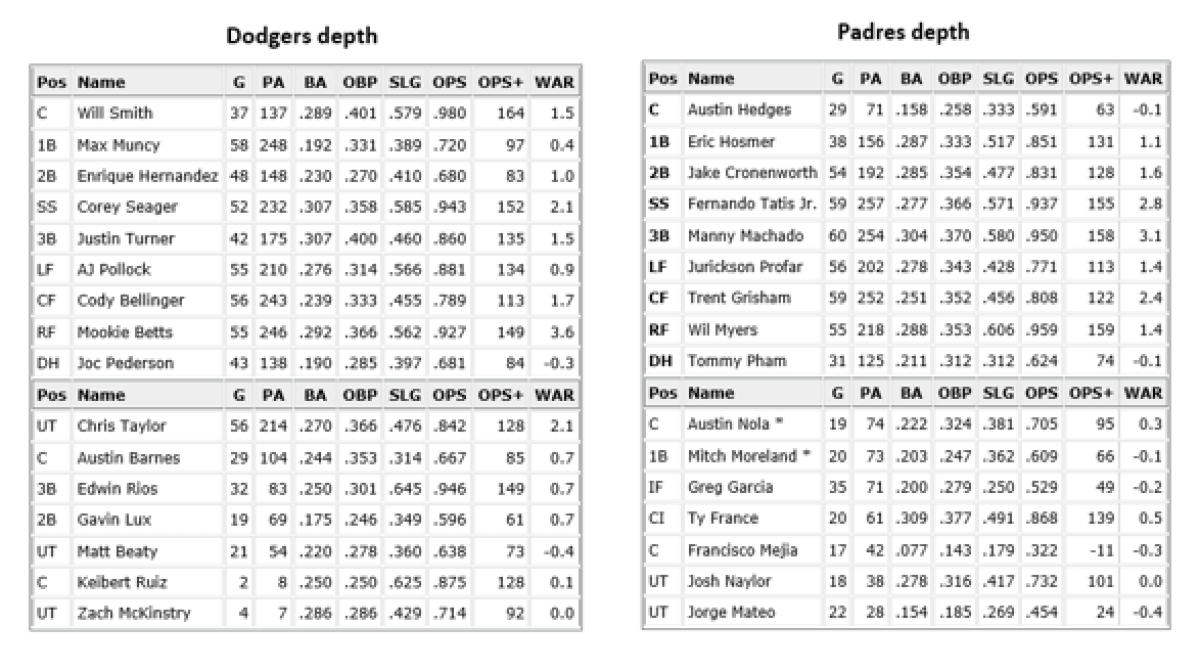
Players coming off the bench for the Dodgers in 2020 had an astounding 199 OPS-plus in relation to bench players in the rest of the major leagues. That was 35 points higher than second-place Atlanta and 84 points higher than the ninth-place Padres.
This type of production from far more than just their regular eight position players has been a hallmark of the Dodgers’ during most of their eight straight National League West titles. Their ability to bring left- and right-handed batters off the bench at seemingly any moment in a game is confounding for opposing managers and is often a brutal challenge for opposing pitchers.
And so it was this winter that, while it cannot be overstated how important it was that the Padres added three quality starting pitchers, it was highly indicative of their goals that they made moves to improve their depth and versatility. Doing so was a priority.
The primary indicators of these increased emphases were two free agent signings of players who may not be in the opening day lineup but are expected to play about as much as a few who will be among the starting nine on April 1.
Bringing Ha-seong Kim over from Korea and bringing back Jurickson Profar spoke to the Padres’ commitment to attempt to build a roster teeming with players who are good enough to start and play multiple positions.
“When we started this offseason we talked about (how) we liked our starting eight guys who were in the lineup last year,” Padres General Manager A.J. Preller said. “We wanted to expand that.”
The Dodgers won more games than any other team in baseball, as well as winning the World Series last year.
They did it with a bunch of players playing and a number of them playing all over.
The Dodgers had 10 players start at least 27 games in the field. They had four players start at least 14 games at two positions. They had 11 players with at least a 0.7 WAR.
No team matched them in any category. The Padres had seven players start at least 27 games in the field, one player (Profar) make at least 14 starts at two positions and seven with at least a 0.7 WAR.
This year, they could give the Dodgers a run in versatility.
The switch-hitting Profar has started at least 35 games at five different spots (first, second and third base, shortstop and left field) and started at least one game at every position except catcher during his career. Kim is expected to play at least three infield spots and could get time in the outfield. Same with left-handed hitting Jake Cronenworth. Brian O’Grady, who also bats from the left side, has played all three outfield spots and first base. Jorge Mateo is an infielder turned outfielder. While Wil Myers has found a home in right field, he has extensive experience at the other outfield spots and first base. Nola is a catcher who began his professional career as a middle infielder and is getting a lot of practice at first base.
“Just seeing how A.J. constructed the roster, you can definitely tell there’s a lot of guys that can play a lot of positions,” first baseman Eric Hosmer said. “It’s extremely versatile. Guys that can play the premium positions as well, shortstop, center field.”
The circumstances of COVID may also show the Padres’ attention to depth and versatility to be prescient. There is always the potential of missed time because of a positive test or as a precaution if a player comes in contact with someone who tested positive. And there is no telling how players will respond to a full 162-game schedule after playing just 60 last year. Teams are primarily concerned with the increase’s effect on the health of pitchers’ arms, but some position players may be well-served to pace themselves as well.
“Over the course of a marathon season versus a sprint, it’s really important to have those extra position players who can give a guy a day off, give you match-up advantages and give Jayce some different options to play with,” Preller said. “We feel like that’s going to result in production and wins.”
More to Read
Are you a true-blue fan?
Get our Dodgers Dugout newsletter for insights, news and much more.
You may occasionally receive promotional content from the Los Angeles Times.
